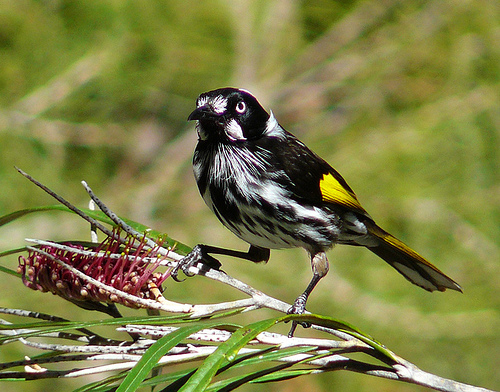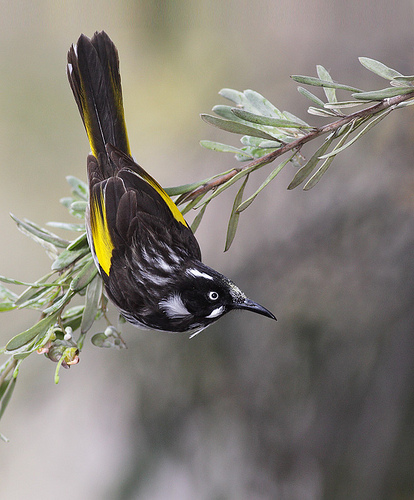Colours
Distinguishing features
It is mainly black, with a white iris, white facial, chest and shoulder streaks and it has yellow margins on its wing and tail feathers.
Sexes are similar in looks with the exception that females are, on average, slightly smaller. Birds in their first year have similar colouring but have grey eyes and a yellow gape and "whiskers" near the nares. (Wikipedia)
Size
- From 16 cm to 19 cm (Length of specimen)
Wingspan
- Wingspan data is not yet available.
Synonyms
Distribution

©Atlas of Living Australia: Australian distribution: New Holland Honeyeater (Phylidonyris (Phylidonyris) novaehollandiae)
Distribution and habitat preferences
It is found in coastal heaths and woodlands throughout Southern Australia
Diet
They primarily feed on nectar, although a large part of their diet may also consist of insects. They obtain most of their carbohydrate requirements from the nectar of flowers. Consequently, they are key pollinators of flowering plants, many of which are endemic to Australia such as Banksia, Hakea, Xanthorrhoea, and Acacia. They may also consume honeydew, a sugary secretion produced by members of the family Psyllidae. (Wikipedia)

